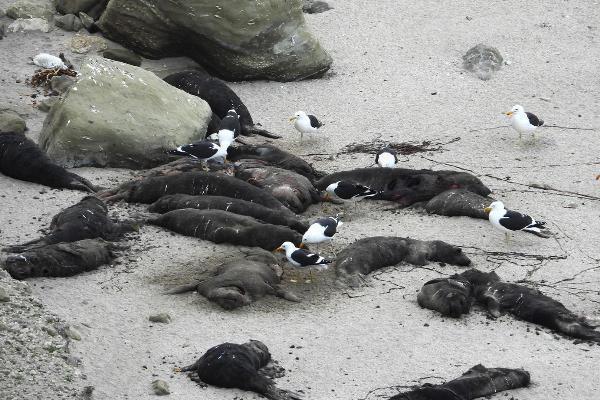Animal Apocalypse: Deadly Bird Flu Spreads Across Hundreds of Species from Pole to Pole

Strong 8k brings an ultra-HD IPTV experience to your living room and your pocket.
Avian Flu Spreads Across Hundreds of Species from Pole to Pole | Healthcare 360 Magazine
(Source-news.mongabay.com)
A deadly strain of avian flu, H5N1, has ignited a global crisis, devastating wildlife populations across six continents. avian flu virus, which first emerged in 1996, has evolved into the most widespread and lethal outbreak in history. From the remote skuas in Antarctica to sea lions in South America and even polar bears in the Arctic, the H5N1 virus is wreaking havoc on biodiversity.
Antarctica’s Fragile Ecosystem Under Threat
In February, H5N1 breached Antarctica, marking a grim milestone for the continent’s already fragile ecosystem. Brown skuas and south polar skuas often referred to as the “pirates of the Southern seas,” are among the most affected. These tough, predatory seabirds are now dying in alarming numbers. Antonio Quesada, director of the Spanish Polar Committee, described the devastating scene, noting that fieldwork this season was unlike any other. Researchers clad in hazmat suits were the only ones allowed onshore at outbreak sites to prevent further spread of the virus.
The scale of the damage is still being assessed, but the impact is evident. In the Falkland Islands, the virus claimed 10,000 black-browed albatrosses and ravaged a gentoo penguin colony. A mass die-off of skuas was also reported, with 50 carcasses found at a nesting colony on Beak Island. For Quesada, who rarely encountered a single dead skua in his 20 years of work, this is a harrowing indicator of the crisis at hand.
A Panzootic of Unprecedented Scale
The H5N1 strain has now infected over 500 bird and mammal species, making it a true panzootic—the animal equivalent of a pandemic. Since its resurgence in 2020, this “Highly Pathogenic Avian flu (HPAI)” strain has spread with alarming speed, crossing species barriers with ease. The virus has shown an ability to infect birds, mammals, and even livestock, raising concerns about its potential threat to human health.
Wildlife has been particularly hard hit, with endangered species suffering devastating losses. In South America, more than 30,000 sea lions were killed in 2022-23, and the virus decimated 17,000 Southern elephant seal pups on Argentina’s Península Valdés—the species’ largest die-off on record. The virus’s reach is staggering, having infiltrated even the most remote regions. Only Australia and the Pacific Islands have so far been spared.
The Human Role in the Crisis
Experts stress that this panzootic is a man-made problem. Modern livestock production methods and the destruction of wetlands have created ideal conditions for the virus to mutate and spread. When avian flu spills over into poultry, it can morph into a highly contagious and deadly virus, which is then spread back to wild birds.
The Delmarva Peninsula in the U.S., a key migratory stopover that also hosts a $4.4 billion poultry industry, exemplifies this dangerous overlap. The virus has not only affected wild birds but is now spreading among cows, with 171 herds in 13 U.S. states infected. The resilience of this virus is alarming, as it has become endemic in Europe and North America, flaring up year-round instead of dissipating between migrations.
A Dire Outlook for Wildlife and Humans
The impact of H5N1 on wildlife is unprecedented. In the U.K., breeding numbers of great skuas have plummeted by three-quarters since 2021, while the virus continues to decimate seabird colonies globally. Mammals, including grizzly bears, sea otters, and domestic animals, have also fallen victim to the virus, raising concerns about its adaptability and potential threat to humans.
As the virus continues to spread, experts warn of long-term consequences. For some endangered species, a single outbreak could mean extinction. The World Health Organization has urged public health officials to prepare for the possibility of the virus jumping to humans, which could trigger a new health crisis.
The ongoing spread of H5N1 serves as a stark reminder of the interconnectedness of human, wildlife, and environmental health. Without urgent action to curb this panzootic, the world’s biodiversity faces an existential threat.
Find practical solutions to common challenges through our insightful articles on Healthcare 360 Magazine
Note: IndiBlogHub features both user-submitted and editorial content. We do not verify third-party contributions. Read our Disclaimer and Privacy Policyfor details.


